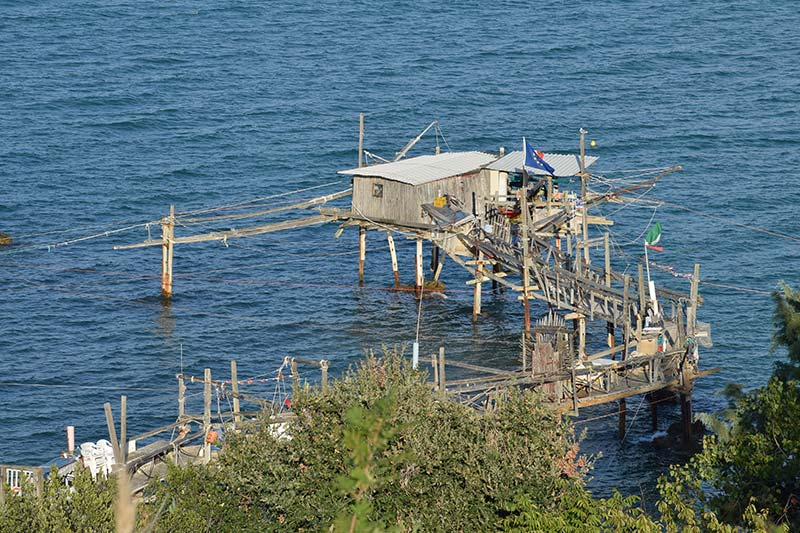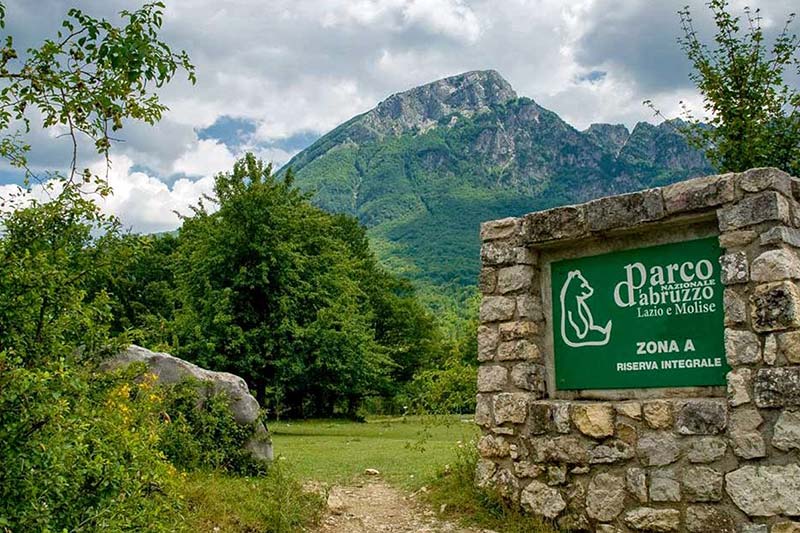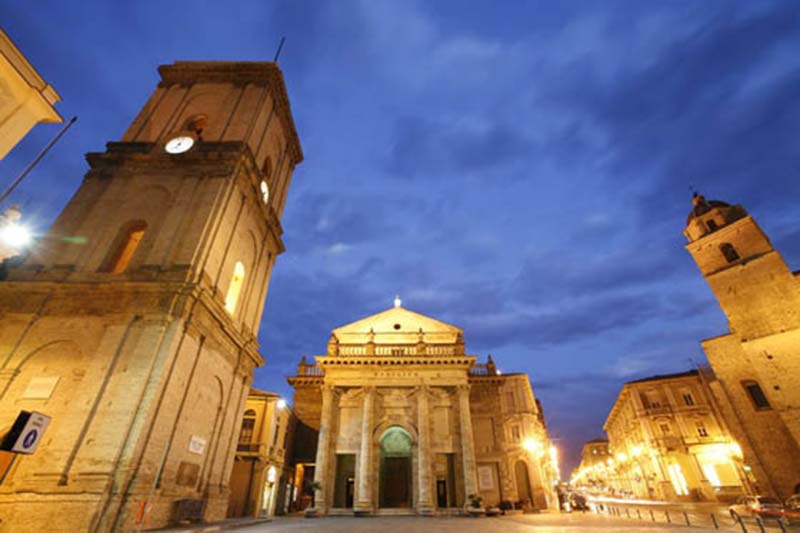Discover Vasto
Places to visit
The charming town Vasto that overlooks the Adriatic Sea, has ancient roots. Since Roman times it had been city Halls, but the archaeological evidence discovered in the area attest even older origins. The legend says that it was the Greek hero Diomede in 1170 BC to found the city. Passing from the legend to the history, it were the “Frentani”, settled on the coast, to found the town in the 9th century B.C. The city had its moment of glory during the Imperial age which were erected temples, public buildings and probably the amphitheatre which is the “Piazza Rossetti”. Around the town are still the walls the testimonies of the glorious past of Vasto. You can also admire findings from local archaeological sites at the “Museo Civico di Palazzo D'Avalos”. 802 Vasto was besieged and conquered by the Frankish army Aymone of Dordona from whose foster city in guastaldia, hence the name “GUASTO D’AYMONE” later transformed into the current name “VASTO”.
Trabocchi Coast
Down along the Chieti coast, between Francavilla & Vasto is what is called ‘Costa dei Trabocchi’ and this 15 km piece of pebbled coastline beyond the fish makes a wonderful morning or evening long shadow walk. Trabocchi resemble a man-made giant beached prawn sitting on the rocks with giant tendrils casting wide nets out into the deeper reaches of the sea. They are literally fishing machines for the seasick, for those that prefer rocks to waves. Fashioned from the salvaged acacia trees and whatever other pieces which the tide and storms wash in, no two stilted trabocchi ever look the same. Each aged piece of salvaged wood has its own internal clock by which needs as must repairs are carried out. Most are over 120 years old in origin although of course not each part on a trabocco will be that old. Trabocchi are wonderful to watch, they are timeless and a place to reflect on how the Abruzzi that built them 200 years ago were simply trying to lessen a loss at sea which could bring about hunger to an entire generation. For those that like sketching or photography, their spiny skeletons are great subject matters. Do try the local fish, avoid the tourist fried & battered and instead try the particularly good local Fish Soup/Stew – Brodetto di Pesce all Vastese – it’s a mixture of assorted fishes, tomatoes, garlic olive oil and touch of peperoncino – delicious!


Tremiti Islands
The first prehistoric finds on the islands date back to the Bronze Age and affirm the presence of the Greek people on the island. Diomede, king of Argos arrival in Tremiti hijacked by a strong storm and the name is "insulae diomedee." More than 2000 years later, a friar Lateran meeting his tomb on the island of St. Nicholas, with the gold and stick Evident greco. Con command of the arrival of Romany islands and took the name changed to "Shivers" (Trametius), for "through" between italy el'illiria. Afterwards many people followed the islands, pirates Slav, pirates Dalmatian, until the arrival of various orders of monks and the construction of Beloeil San Nicola.Le Tremiti were also a land of deportation in different eras, by Roman fascismo.Alla until the end of the regime, with the return to democracy, there has been an alternating series of mayors who carry out democratic discourse. The archipelago of islands includes 5 Tremiti islands, San Domino, St. Nicholas, Cretaccio, Capraia and Pianosa. The first 4 are close to each other and easily accessible by boat or ribs; Pianosa is 12 miles from the rest of the archipelago and is not reachable, as marine reserve integrale.San Domino and San Nicholas, the two inhabited islands are visited independently, on foot; Cretaccio Capraia and are accessible through several "water taxi. The excursions are a lot to be done, some can be done on foot, for the most trained, some you can only make dinghy or motor boat.
National Park of Abruzzo
The National Park of Abruzzo was established in 1923 to protect nature and to save certain wild animals from extinction. It’s in the heart of the central Apennines between the regions Abruzzo, Lazio and Molise and its some 50,000 hectares are home to 25 towns. In 1980 the Autonomous Board National Park of Abruzzo, in charge of the Park administration, has started a zonation project, which consists in dividing the whole territory in zones. This board has set very severe restraints on full protection areas and it has established more flexible rules for tourism in the remaining ones. At present, the Park is divided into 4 zones: Full Reserve, General Reserve, Protection Zone and Development Zone. Almost every town has been provided with a Tour Information Centre and with Zone Offices.


Lanciano
This ancient town, a few km from the Adriatic and in the heart of the commercial south-eastern corner of Abruzzo, is rich in art, history and events for the visitors, and a special religious destination for its famous Eucharistic Miracle. A prehistoric village dating back to 7000 years ago has been recently discovered on the site. Later on it became the centre of the Frentani, a proud Italic population, under the name of Anxanum. The Romans made it a municipium for its key position on the road to Apulia. Situated along the Aracturus Magnus (the main transhumance route in Abruzzi) Lanciano grew in importance, until in the XVI century the Turkish threat and the loss of its former privileges in the Kingdom of Naples marked the beginning of its decadence.
